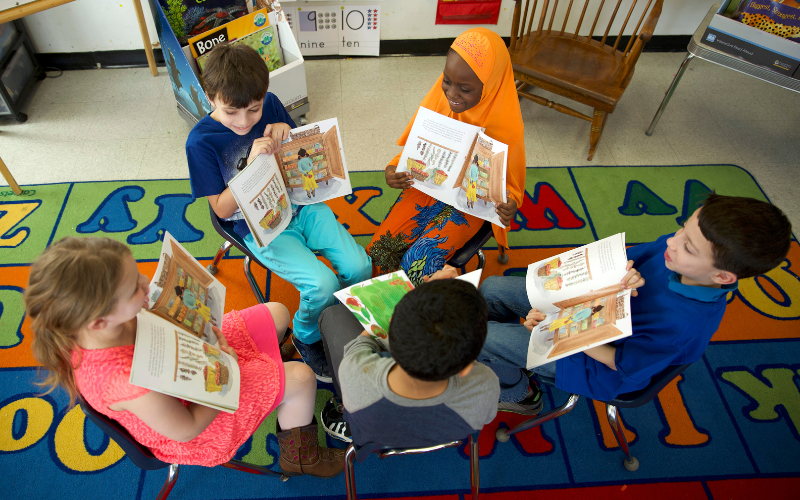
*Effective reading instruction involves a combination of powerful instructional settings. This post is the next in our "What is...?" series, where we define each instructional context that makes up a coherent literacy system.
*Effective reading instruction involves a combination of powerful instructional settings. This post is the next in our "What is...?" series, where we define each instructional context that makes up a coherent literacy system.
What are book clubs?
During book clubs, students meet in small, heterogeneous groups to discuss a book that they have all read or listened to. Through sharing their thinking, they build a richer understanding than any one student could gain from independent reading alone.

Why are book clubs important?
As an instructional context, book clubs:
- Deepen readers' appreciation and understanding of a common text
- Extend students' thinking as they process and interpret the perspectives and opinions of their peers
- Expand students' ability to express their ideas orally using academic language
- Provide an authentic context for applying norms for listening and speaking.
"As students bring together much of their learning during book clubs, they find themselves in control." – Irene C. Fountas and Gay Su Pinnell
 What do book clubs look like?
What do book clubs look like?
Book clubs bring a small group of students together to talk about a book each has chose (from a limited selection). Students may sit in a circle of chairs or on the rug, but without a table between them. There are no barriers to communications. You facilitate the group to support development of effective discussion skills, to lift the level of discussion, and to promote a deep understanding of the writer's and illustrator's craft.
Structure of a book club:
- Before Reading – Introduce the titles from the set of selections to the class. Form book club groups based on students' preferences. Make a schedule so students know when they will meet.
- Independent Reading of the Book – Students read the text individually. If particular students are not able to read the text independently, you may need to read the text to them or make an audio-recording available.
- Book Club Discussion – When all students in a group have finished reading or listening to the book, bring them together for a discussion. Discussion is facilitated by the teacher, but the goal over time is for students to initiate the talk, respond to others in the group, and add to each other's ideas using evidence from the text or personal experiences to build a rich understanding.
- Group Evaluation – At the end of the discussion, students self-evaluate their book club on characteristics such as turn-talking and preparation. They talk about what they will work on.
The amount of support you provide for the discussion will vary. At first, you will be providing a higher level of support, but as children gradually take over the discussions, your support will lessen and students will find that the experience of exchanging ideas with their peers and co-constructing richer understandings of texts is genuinely rewarding.
To learn more about the Fountas & Pinnell Classroom™ Book Club Collection, click the link below.
~The Fountas & Pinnell Literacy™ Team
Check out the entire "What is?" blog series:
- What is Guided Reading?
- What is Interactive Read-Aloud?
- What is Shared Reading?
- What are Reading Minilessons?
- What is Independent Reading?
- What are Book Clubs?
- What is Phonics, Spelling, and Word Study?


